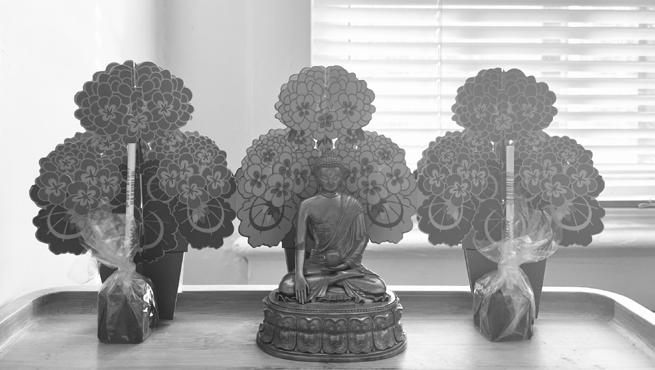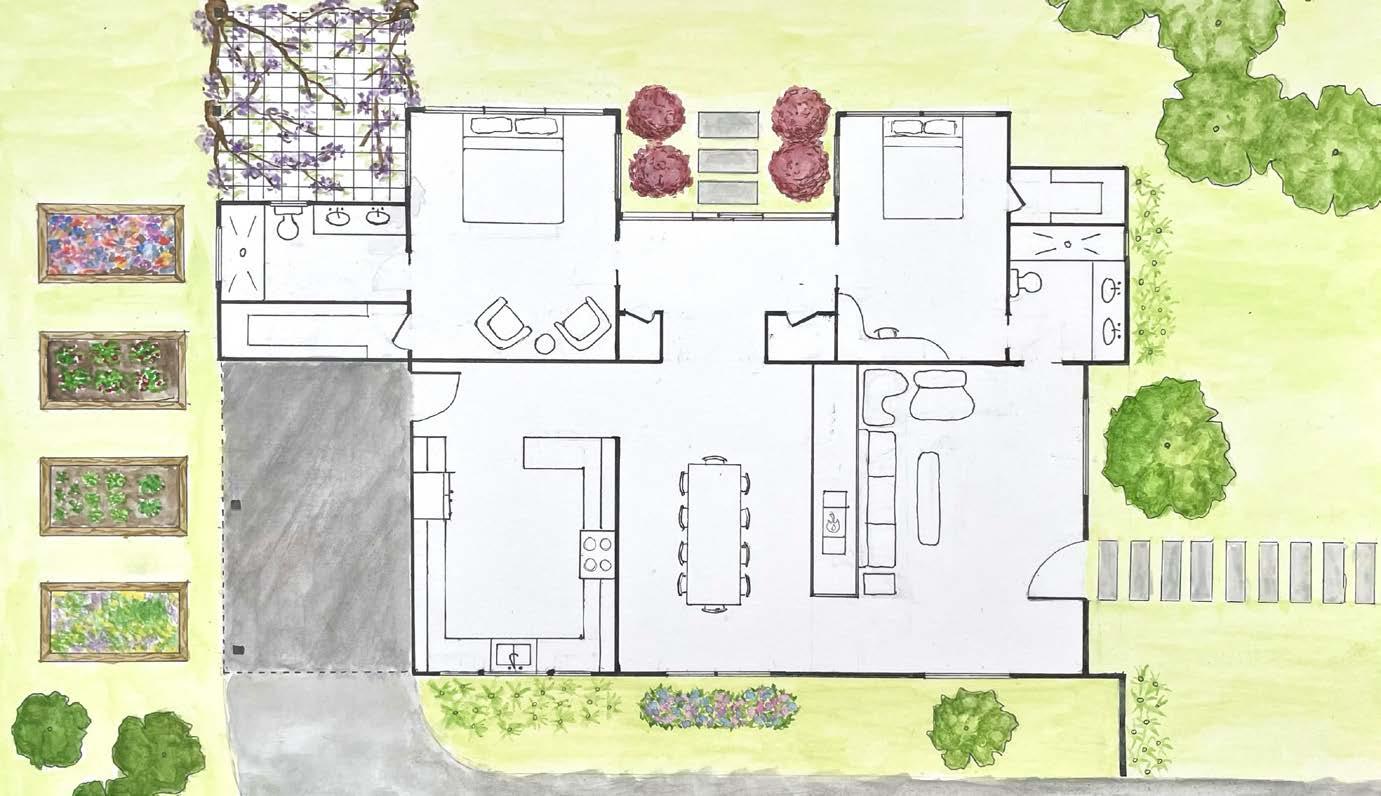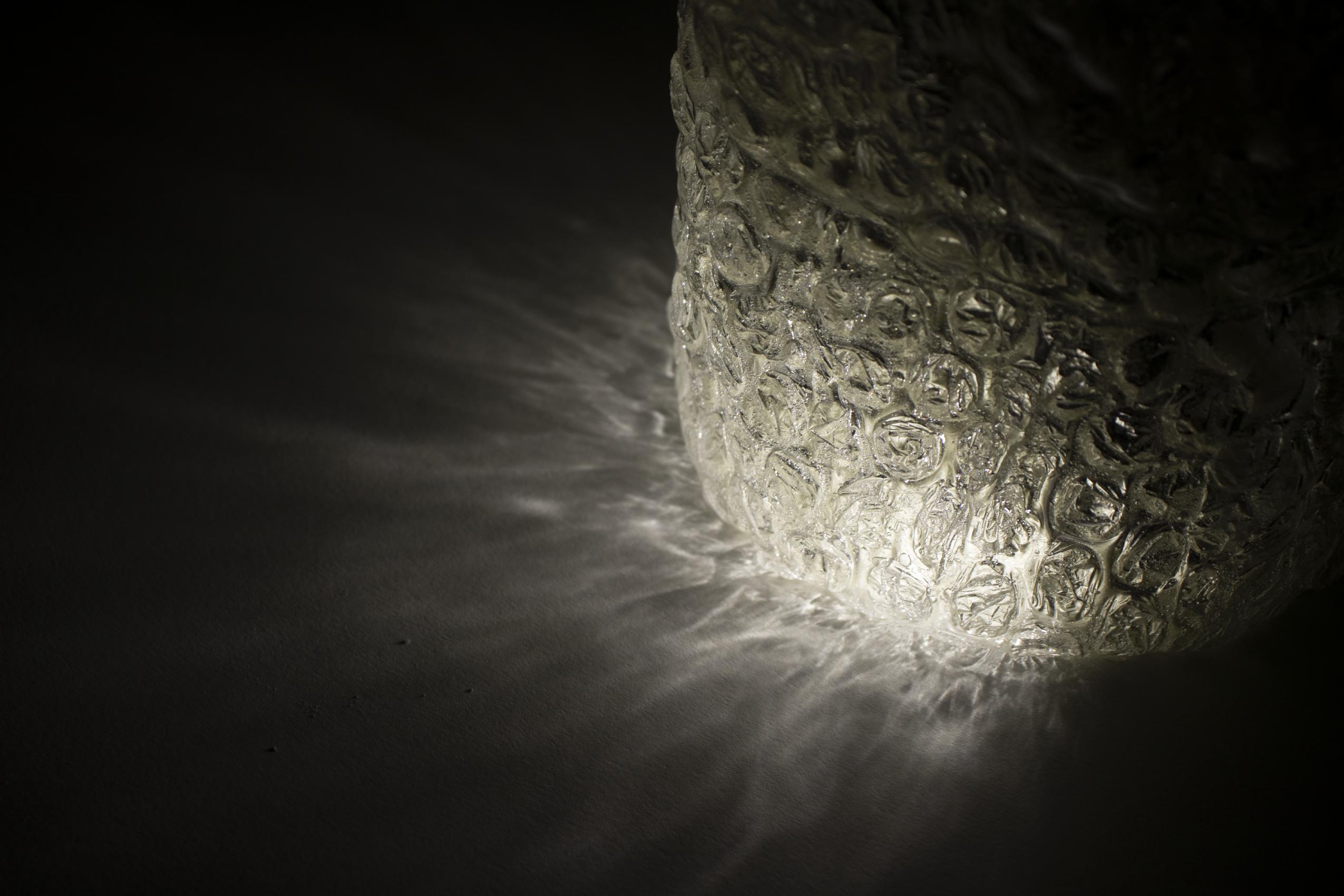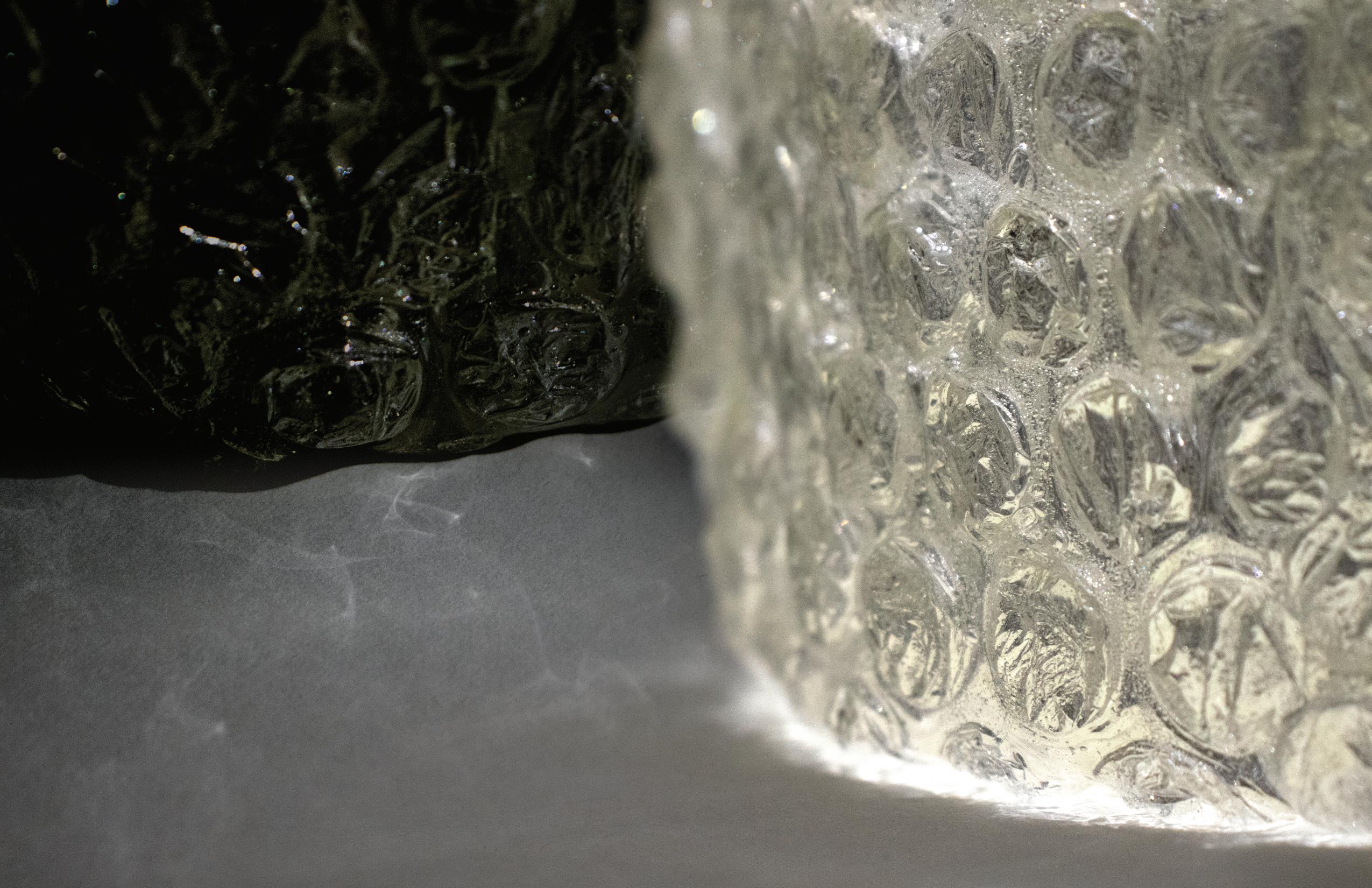
2 minute read
SCALED SCALED SCALED SCALED
Looking around my 114 square-foot dorm room, I noticed the little arrangements I had made with the few things I brought from home. I wondered how my tastes would manifest on a larger scale in a home of my design. Having no experience and only my memories of Sunset magazine ranch houses to guide me, I began.
In this small sketch inspired by my bedside table, I imagined a shrine in front of large windows, behind which the pink paper potted flowers had grown to be smoke bushes. The shrine and smoke bushes were key features of my family’s life in my childhood home.
Advertisement

Ramona Delyser
I established a rough layout of the house and worked out the dimensions, ending up with a 1500 square foot home. The smoke bushes and wall of windows of the original inspiration still remain, but in a more practical way. Elements of homes I had loved as a kid integrated themselves into my design: a pass-through over the stove, garden beds by the carport, lavender like at my grandma’s house, bamboo along various walls, and wisteria over the patio.
While not everything is drawn in perfect convention and there are surely many improvements to be made, I found the process to be extremely rewarding. I was able to create a personal reflection of my memories. I enjoyed revisiting the residential architecture of my past that has shaped the way I understand and create spaces.

SOPHIA ZHANG
Material Logics


Julian Harake
Fall 2022
material experiments in bubble wrap modge podge, epoxy resin, rockite
Highlighted Transparencies is a project which explores the material and commercial dynamics of bubble wrap. In everyday use, bubble wrap is a secondary commodity used in the packing industry. It is not a product in and of itself; its sole purpose is to serve other fragile products during storage or shipping processes. As such, its presence is often something that is completely ignored or taken for granted - however, given the intensity of the flow of commodity goods across the globe today, the production, export, and use of bubble wrap is actually a massive undertaking and industry which contributes heavily to the presence of plastic and microplastic waste in the environment today. In this project, I attempt to call attention to bubble wrap as a commodity product by centering its form, texture, and material qualities, prioritizing its existence over the object it wraps around and stretches over.
Given the fact that bubble wrap itself is a highly malleable and elastic material, the development of the fabrication process for these vessels has been centered around the goal of “freezing” the bubble wrap in particular s tates of being while stretched and wrapped over existing vessel forms. This involves the layering of other casting and hardening materials, namely Modge Podge, epoxy resin and Rockite, to varying degrees and ratios. Because dried Modge Podge peels away easily from the plastic of bubble wrap, this material is what directly interfaces with the original material; resin and Rockite are then poured over the dried Modge Podge layer, taking on the texture of the bubble wrap as it cures. The original vase and bubble wrap are then taken out and peeled away from the inside of the vessel, leaving only the impression of the original material.
The Modge-Podge-resin-Rockite composite material takes on and emulates certain qualities of bubble wrap, such as its transparency, but is also different enough from the packing material in its solidity and rigidity that it creates a moment of dissonance and confusion for viewers as they question the material makeup of the vessel














